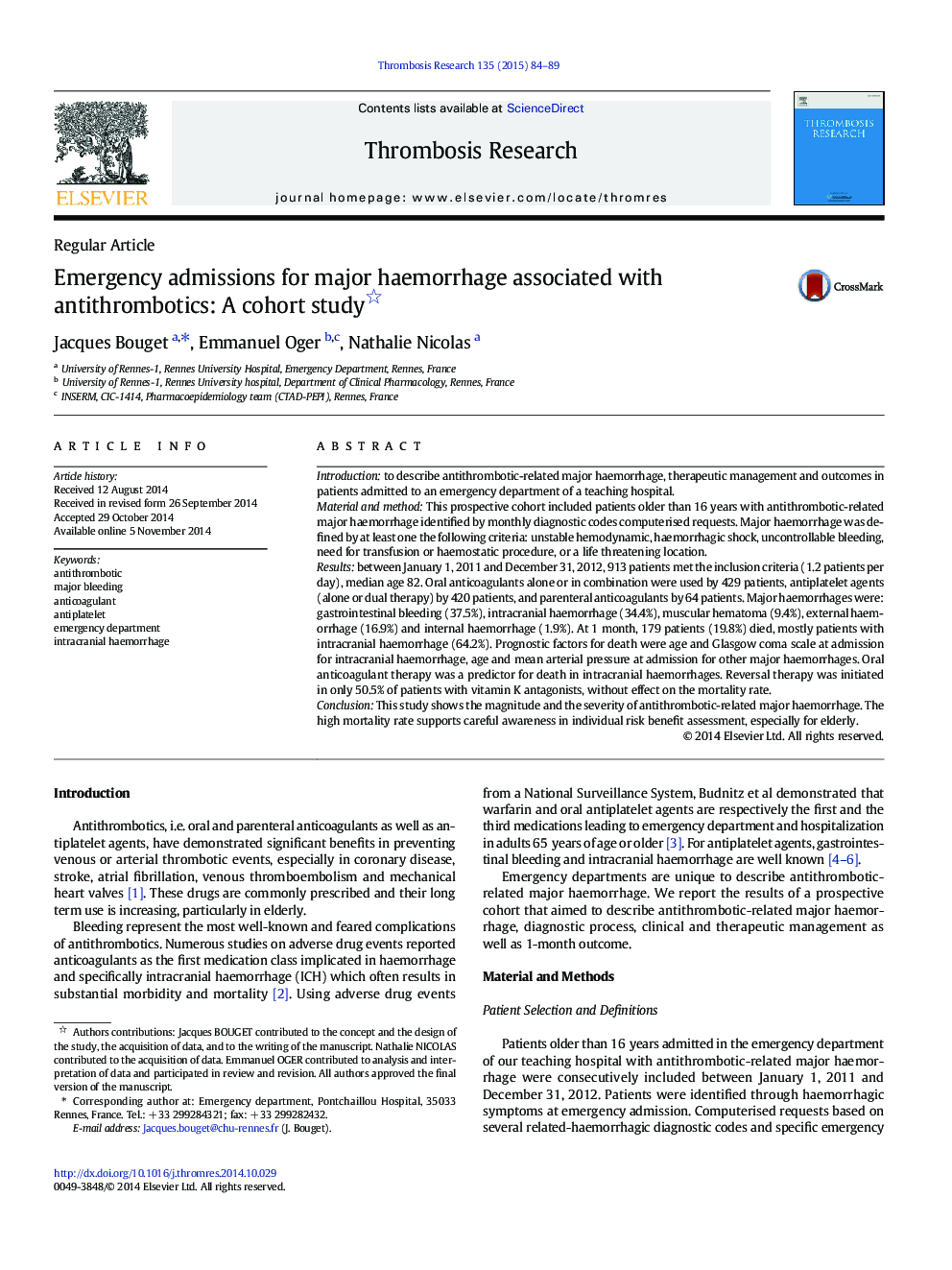| کد مقاله | کد نشریه | سال انتشار | مقاله انگلیسی | نسخه تمام متن |
|---|---|---|---|---|
| 3027110 | 1182939 | 2015 | 6 صفحه PDF | دانلود رایگان |
• High risk of deadly bleeding in a very old population taking antithrombotics
• Oral anticoagulants and antiplatelet drugs are equally implicated
• Oral anticoagulant is a predictor of death in case of intracranial haemorrhage
Introductionto describe antithrombotic-related major haemorrhage, therapeutic management and outcomes in patients admitted to an emergency department of a teaching hospital.Material and methodThis prospective cohort included patients older than 16 years with antithrombotic-related major haemorrhage identified by monthly diagnostic codes computerised requests. Major haemorrhage was defined by at least one the following criteria: unstable hemodynamic, haemorrhagic shock, uncontrollable bleeding, need for transfusion or haemostatic procedure, or a life threatening location.Resultsbetween January 1, 2011 and December 31, 2012, 913 patients met the inclusion criteria (1.2 patients per day), median age 82. Oral anticoagulants alone or in combination were used by 429 patients, antiplatelet agents (alone or dual therapy) by 420 patients, and parenteral anticoagulants by 64 patients. Major haemorrhages were: gastrointestinal bleeding (37.5%), intracranial haemorrhage (34.4%), muscular hematoma (9.4%), external haemorrhage (16.9%) and internal haemorrhage (1.9%). At 1 month, 179 patients (19.8%) died, mostly patients with intracranial haemorrhage (64.2%). Prognostic factors for death were age and Glasgow coma scale at admission for intracranial haemorrhage, age and mean arterial pressure at admission for other major haemorrhages. Oral anticoagulant therapy was a predictor for death in intracranial haemorrhages. Reversal therapy was initiated in only 50.5% of patients with vitamin K antagonists, without effect on the mortality rate.ConclusionThis study shows the magnitude and the severity of antithrombotic-related major haemorrhage. The high mortality rate supports careful awareness in individual risk benefit assessment, especially for elderly.
Journal: Thrombosis Research - Volume 135, Issue 1, January 2015, Pages 84–89
